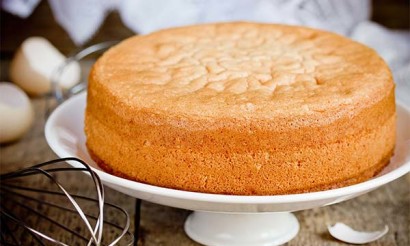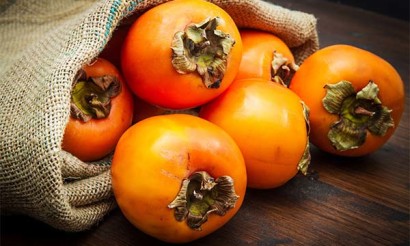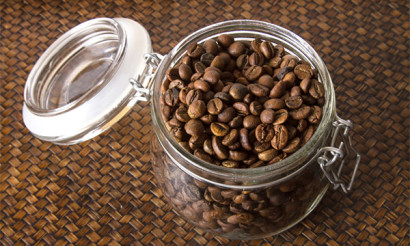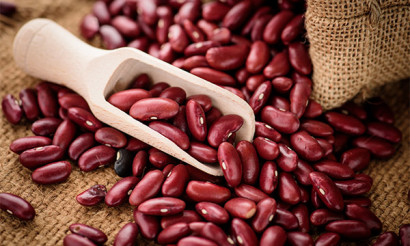How to store bread at home
- Composition and technology
- Why Bread Spoils Quickly
- How to store bread without getting moldy
- How to store bread at home
- Can I keep it in the fridge?
- Can I keep bread in the freezer?
- How to keep bread fresh
- Which bread box to choose for storing bread
- Making bread at home
- Recipe 1
- Recipe 2
- Bread without yeast
- Interesting Facts
Bread is a food product baked from cereals, a simple, tasty and hearty meal. There is nothing easier than making a cheese and sausage sandwich for breakfast or a light snack for lunch. It's easy to take with you since you don't need to use a knife or fork. The product is made from natural ingredients and has no health problems.
Composition and technology
For its preparation, water, flour, salt, yeast or sourdough are used. Rye or wheat flour is used. In rare cases, products are baked from corn and barley. Very often the flour is decorated with grains, nuts, raisins, seeds, sesame seeds and poppy seeds.
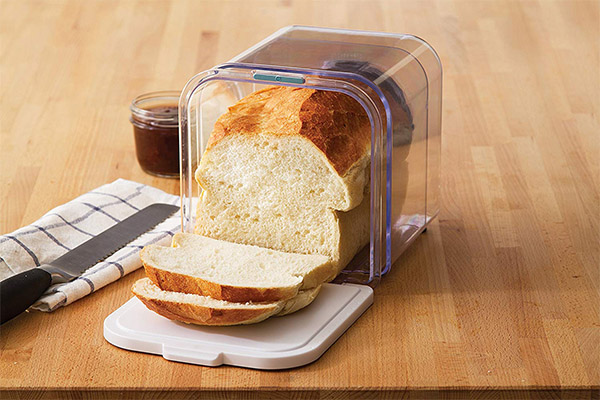
Bread is given different shapes - oval, round and rectangular. Gaseous substances are added to the dough to make it light and airy. One such substance is buttermilk and baking soda. When combined, enough gas is released to make the product airy. When yeast is added to the flour, a biochemical process occurs. Fermentation of carbohydrates and sugars releases carbon dioxide.
Some varieties are baked with a sourdough base. The lactic acid bacteria in the sourdough base feed on the fermentation products of the yeast. As a consequence, they release lactic acid, which gives the bread a pleasant sourness.
Why Bread Spoils Quickly
Bread can spoil for a number of reasons. The shelf life is usually no more than three days. Observing the norms and conditions, you can increase the shelf life, but such a product will lose all the nutritional properties. In fact, the bread that went bad quickly was made without the addition of harmful preservatives. In the manufacturing process, all GOSTs were observed.
- Composition. A natural product consists of several components. You can not buy bread with a shelf life of more than three days. To increase the shelf life, many manufacturers add preservatives, thickeners, fats to the product. Such components can have a negative effect on the body.
- Manufacturing process. The shelf life of a flour product is greatly influenced by the manufacturing technology: the fermentation stages, the addition of sugars and fats, the combination of flour of different varieties.
- Storage mode. Since bread is baked on the basis of yeast, it is very important to observe the temperature regime - not higher than 21 degrees. High temperature and humidity - this is an excellent environment for the development of mold. It is recommended to store such a product in a tight container. The whole point is that there are a large number of spores and bacteria in the air, which in interaction with yeast fungi and high humidity turn into mold. Bread is a suitable environment for bacteria, they settle there and multiply well. But at low humidity, the product goes stale very quickly. The best option would be 75% humidity in the room.
- Packaging. Very often the product spoils because of polyethylene packaging. This is a great environment for the formation of mold spores. Such packaging is not air permeable. If it is closed tightly, moisture is formed at high temperatures. It is best to store bread in a paper bag.
How to store bread so it does not go mouldy
Shelf life of the product most often depends on the variety.
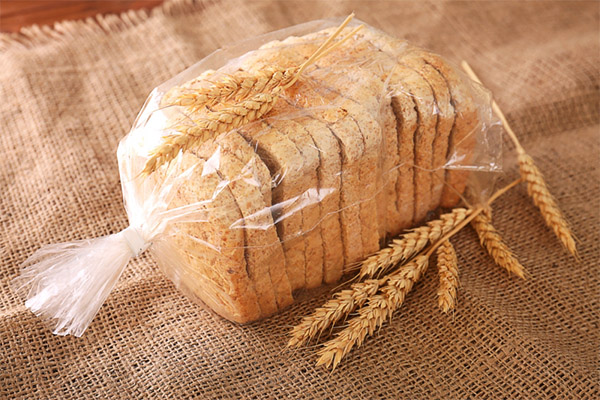
- Wheat bread should be stored at a relative humidity of no more than 75%. The temperature is kept in the range of 22-25 degrees. This way the shelf life will be up to three days. Without packaging the shelf life will be no more than 24 hours.
- Rye bread can be stored longer. This is due to the rye flour. With or without packaging, the shelf life reaches 5 days.
- Rye-wheat product can be stored for 4 days. A paper bag is best for this purpose.
- Borodinsky can be stored for up to 4 days, provided the product is in a dark, cool place, without packaging.
- The loaf should be stored for a maximum of 3 days. Without packaging, it will be gone in 24 hours. These conditions are feasible if the flour product is made according to the technology.
How to store bread at home
When buying a product, be sure to look at the date. Products with a shelf life of more than 3 days are dangerous to health due to the addition of preservatives. At home, the bread should be removed from its original packaging. If the packaging is paper, it should not be closed tightly, otherwise the flour product will quickly get stale.
For better preservation of the product is recommended to wrap it in natural fabrics. Linen and cotton are good. These fabrics are able to let oxygen pass through and let the product breathe. If there is a bread box at home, the product should be stored without any packaging. Breadboxes made according to GOSTs are capable of storing bread for up to 60 hours.
It is not recommended to store different varieties of bread in the breadbox. In this case, each product should be packed in a separate paper bag.
Can bread be kept in the fridge
It is recommended to store bread in the refrigerator. Low temperatures prevent the formation of mold. Thus, the storage period can be extended up to 7 days. Flour product should be stored in a package. If it is polyethylene, it is recommended to make several holes. This is necessary for the product to breathe, not to form condensation. Such a container should be disposable.
In a paper bag, the product will retain its freshness longer. Paper will protect it from various smells in the refrigerator.
The ideal place is the bottom shelf. You should give up storage on the doors. Be sure to make sure that there are no extraneous products nearby.
Wheat bread is best kept in the refrigerator. Cold temperatures are absolutely not suitable for black and Borodino bread.
If the bread is hot, it is recommended to let it cool down to room temperature first.
Can bread be stored in the freezer
For storage in the freezer, polyethylene packaging must be airtight. A great option would be foil. Bread, tightly wrapped, can be stored for up to 1 month. Thawed product should be consumed immediately. It will only be soft for a few hours.
How to bring bread back to freshness
Not following storage conditions will make bread stale. This is due to loss of moisture. High temperatures and moisture can be used to make it soft.
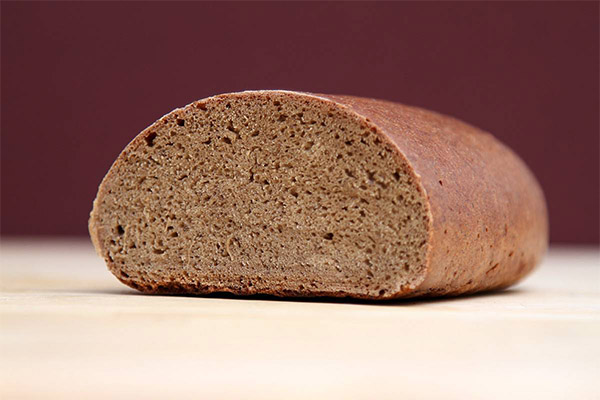
- Microwave. Cut the bread into small pieces, no more than 2 centimeters wide. The product soaked in water, place in the oven, next to put a dish with warm water. To enhance the effect, cover with a special lid to create condensation for 60 seconds. Another way to make it soft is with a towel. Place slices of bread in a wet cotton towel for 10 seconds.
- Oven. Place slices no more than 2 centimeters wide on a damp towel, and place on a baking tray. Cooking time is up to 10 minutes at 120 degrees. If using foil, the bread should be moistened. Allow to cool slightly before using.
- Steamer. Place the pieces of bread in the steamer for 3 minutes. It is best to use the steaming mode. If there is no such equipment, it can be replaced by a pot. After the water boils, put a colander on top with the pieces of bread. The water should not reach the bread, otherwise it will quickly turn into mush.
- Pan. Water-wet slices are placed on a preheated frying pan. Cooking time is 3 minutes on low heat. A high heat can make the bread even stale.
- Polythene bag. This is the longest way to recover bread. The bag should be tied tightly. It should be placed in a warm place - on a radiator or window sill with sunlight - and left until condensation forms inside.
Recovered bread should be eaten immediately. You can't make it soft a second time.
Which breadbox to choose for storing bread
The size of a standard breadbox allows you to store up to two loaves at a time. The design of a quality product is airtight, retains moisture, protects against extraneous odors.
Varieties:
- Wooden. Such a breadbox is valued for its environmental friendliness. Baking in it is preserved for a long time. It is best to choose products made of ash, lime, birch, which will not spoil the smell of the product with its woody notes. But the wooden breadbox should be carefully watched, not to use chemicals for cleaning. Without proper care, it quickly gets moldy, it can dry out. It should be constantly ventilated. Also wood strongly absorbs odors.
- Wicker. Wicker breadboxes are made from natural materials. Often birch bark or willow twigs are used. This container is not designed for long-term storage, it is more appropriate for the festive table.
- Stainless steel. This material is durable, does not rust, is strong enough. It is easy to take care of, no special means for cleaning are needed. It will not allow foreign odors to penetrate. In such a breadbox, baked goods will stay fresh longer.
- Plastic. Such a product is considered the most inexpensive. It is the easiest to care for, it is enough to wipe with a damp cloth. But it is necessary to choose high-quality plastic. The product should not have a characteristic smell of plastic, because the bread will have a specific taste. Breadbox must be intact, without chips. It is better to buy it in specialized stores.
- Ceramic. The product of ceramics is unique, has a unique design. Most often it is handmade, so it is qualitatively executed. The main drawback is the fragility. Ceramics will not be impregnated with foreign odors, and bacteria will not settle in it.
- Glass. Most of the time, these bread boxes are transparent. This allows you to always observe the state of the product. They do not absorb foreign odors, but have a significant disadvantage - fragility.
How to choose a breadbox
To begin with, you should understand the material. An ordinary breadbox can hold no more than two loaves, so you should keep in mind the amount of bread you consume. Since it is not recommended to store two different kinds of product at the same time, you should choose a breadbox with a partition or in several tiers. Before buying, you need to make sure that all mechanisms work properly, and the door closes hermetically. Modern manufacturers offer a huge selection of models and shapes. Very convenient breadboxes with suspended designs. They will not take up much space, which is especially relevant for a small kitchen.
Making bread at home
Recipe 1
Baking bread is not difficult, but you need to be very attentive to the process of preparation. To prepare homemade flour product, you will need 350 milliliters of water, half a kilogram of flour, 1 teaspoon of yeast, 1 tablespoon of vegetable oil, salt and sugar.
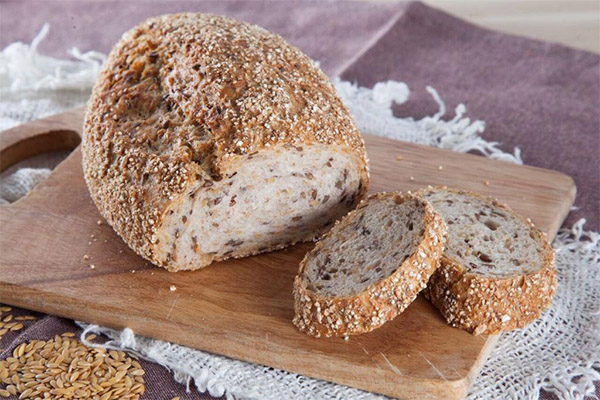
The first thing you need to prepare the preparation, mix yeast, 1 tablespoon of flour and water. The water must be hot. Stir thoroughly and put in a warm, dark place for half an hour. The foam that forms indicates readiness. Next, you need to pour the mixture into a large container and add one cup of flour. Stir until the lumps disappear. Remove to a warm place for 1 hour. Mix in the remaining flour, sugar, salt and oil. Knead the mixture until it no longer sticks to the sides of the bowl.
Form the ready dough into a ball. Transfer it to a large bowl, the bottom of which is covered with flour. Leave the dough to rest. When it has risen sufficiently, place it on a buttered baking tray. Baking time is 50 minutes at 200 degrees. The finished bread will be covered with an even brown crust. It should be wrapped in a linen towel and put in a plastic bag to soften the crust.
Recipe 2
To prepare rye bread, you should prepare 300 grams of rye flour, 300 grams of wheat flour, 2 tablespoons of yeast, 2 cups of hot water, vegetable oil, salt and sugar.
The first thing to do is to make a sourdough. To do this, mix warm water with yeast and sugar. Leave it for 30 minutes until it becomes foamy. Pour the stew into a container, where you need to mix wheat and rye flour. Stir the dough until it is even. Cover with a towel, and put in a dark place for 1 hour. After the dough has risen, place it on a baking sheet greased with butter. Cooking time is 60 minutes at 200 degrees. You can tell when it is ready by the brown crust that has formed. It should be smeared with melted butter. Let cool for 20 minutes and serve.
Bread without yeast
There is a simple recipe for bread without using yeast. It is necessary to prepare 300 grams of flour, a tablespoon of salt, a tablespoon of sugar, 300 milliliters of kefir and a teaspoon of soda.
First you should mix a tablespoon of kefir and baking soda. This is necessary to remove the taste of the baking soda. The resulting mixture should be mixed with the remaining kefir, gradually adding sugar and salt. Add the mixture to the flour and mix. If the mass sticks to your hands, you should add a little more flour. Cover the ready dough with plastic wrap and leave to rest for one hour. Bake for 90 minutes at 180 degrees. Ready dough can be checked by piercing the middle with a toothpick: it should be dry. The crust should lightly brown.
Interesting Facts
- When consuming it, you need to keep it in moderation in order to limit the appearance of excess weight.
- Store-baked bread has disadvantages. The body is harmed by the composition of the bakery product. Such a product contains gluten, refined flour, food additives, namely - dyes, preservatives, flavor enhancers, waste.
- Refined flour is a product from which the grain germ has been removed. This is done to increase the shelf life of the product. After processing, starch remains, which contributes to rapid obesity.
- Gluten is added to improve flavor, but it can cause allergic reactions.
- Manufacturers add flavor enhancers, preservatives to extend the shelf life.
- Very often the flour is bleached with chlorine to make the baked product look as attractive as possible.
- The oils included turn into carcinogens. Some manufacturers add trans fats. Such fat undergoes special treatment, and it is not fit for consumption.
- The yeast contained in it has a bad effect on the body as a whole. They can destroy intestinal microflora. Excessive consumption of store-baked bread leads to gastritis, ulcers, and kidney stones. Yeast creates favorable conditions for the reproduction of bacteria.
«Important: All information on this site is provided for informational purposes only. purposes. Consult a health care professional before using any of our recommendations. specialist before applying any of the recommendations. Neither the editors nor the authors shall be liable for any possible harm caused by materials."

